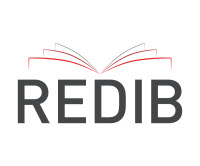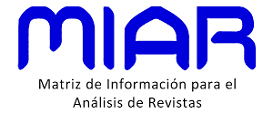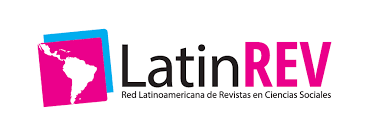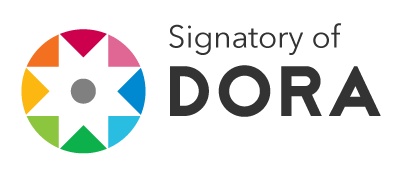Rutinas Organizativas en el Contexto Universitario: Metáfora Interactiva
Resumen
El artículo que se presenta tiene como objetivo configurar las rutinas organizativas en el contexto sistémico universitario, describiendo y explicando las relaciones que se establecen en el capital humano y la sinergia que producen para generar resultados. Las rutinas se consideran una secuencia de patrones de comportamiento aprendidos que producen un dinamismo interno, fundamentando las actividades grupales en el cumplimiento de funciones. Los teóricos de las rutinas organizacionales, Nelson y Winter (1982), sustentaron junto a otros investigadores de la temática, las acciones que se originan en las organizaciones que contribuyen a la evolución, crecimiento y éxito de cada una. Estas actividades, se sitúan dentro del ámbito universitario, un sistema social abierto (Johansen, 1993; Checkland, 1993) que implica entradas y salidas constantes de actualización, investigación, innovación, para el mejoramiento en las áreas de carreras y el resto de subsistemas, proporcionando relevancia a las instituciones de educación superior en el mercado competitivo.
Descargas
Citas
Argote, Linda (2003) Organizational learning: Creating, retaining, and transferring knowledge. US/Mountain. Boston.
Barrales, Vanessa (2008) Construcción de Capacidades Dinámicas para Generar Innovación y Ajuste de Flexibilidad: La Influencia Moderadora del Dinamismo de las Rutinas Organizativas. Facultad de Ciencias Económicas y Empresariales. Departamento de Organización de Empresas. Tesis doctoral. Universidad de Granada. España.
Bertalanffy, Von Ludwig (1976). Teoría General de los Sistemas. 7ma. Reimpresión. México: Fondo de Cultura Económica.
Blau, Peter (1955) The Dynamics of Bureaucracy. University of Chicago Press. Chicago.
Cohen, Michael & Bacdayan, Paul (1994) Organizational Routines are stored as procedural memory: Evidence from a laboratory study. Organization Science.5 pp. 554-568.
Checkland, Peter (1993). Pensamiento de Sistemas, Práctica de Sistemas. México: Editorial Limusa.
Crozier, Michel (1964) The Bureaucratic Phenomenon. University of Chicago Press. Chicago. USA.
Emirbayers, Mustafa; Mische, Ann (1998) What is Agency? American Journal of Sociology. Vol.103.Nº 4, pp. 962-1023.
Feldman, Martha & Pentland, Brian (2000) Organizational Routines as a Source of Continuous Change. Organization Science. Vol. 11.Nº 6, pp.611-629.
Feldman, Martha & Pentland, Brian (2003). Reconceptualizing organizational routines as a source of flexibility and change. Administrative Science Quarterly, vol. 48, pp. 94-118.
Galas, Judith. (1992). Professor Edwin O. Stene: A Passion for People and Public Service. University de Kansas.
Génova, Miguel y Guzmán, José (1983). Teoría de Sistemas. Caracas: Universidad Nacional Abierta.
Giddens, Anthony (1984) The Constitution of Society: Outline of the Theory of Structuration. Polity Press. Cambridge.
Gómez, Guillermo (2001). Sistemas administrativos. Análisis y Diseño. México: McGraw-Hill.
Hummel, Ralph (1987) The Bureaucratic Experience. St. Martin´s Press. New York.
Johansen, Oscar (1993). Introducción a la Teoría General de los Sistemas. México. Editorial Limusa.
Kesting, Peter. (2004). The relation between decision and routine: an action-based approach. Unpublished workingpaper. Marburg, Metropolis-Verlag. Alemania.
Le Moigne, Jean (2006) La Théorie du systéme général: Théorie de la modélisation. Disponible en: http://www.mcxapc.org/inserts/ouvrages/0609tsgtm.pdf
Lilienfeld, Robert (1984). Teoría de Sistemas. Orígenes y Aplicaciones en Ciencias Sociales. México: Editorial Trillas.
Lovera, María Isabel, Mujica, Mercedes y Smith, Hélida (2011). Rutinas organizativas académicas como impulsoras del desarrollo organizacional universitario. Omnia. Año 17, No. 2, 2011, pp. 103 – 112.
Lovera, María Isabel (2012). Rutinas Organizativas en la Gestión de Conocimiento de las Universidades. Tesis Doctoral. Universidad del Zulia. Maracaibo. Venezuela.
Nelson, Richard y Winter, Sidney (1982) An Evolutionary Theory of Economic Change. Harvard University Press. Cambridge, M. A.
O´Connor, Joseph (1998). Introducción al pensamiento sistémico. Barcelona: Ediciones Urano.
Pentland, Brian & Rueter, Hirsch (1994) Organizational routines as grammars of action. Administrative Science Quarterly, No.39 pp.484-510.England.
Polanyi, Michael (1966) The Tacit Dimension. Routledge & Kegan Paul. London.
Sinkula, James (2002) Market-based success, organizational routines, and unlearning. Journal of Business & Industrial marketing. Volume 17. Issue 4. Pg. 253 – 269.
Skynner, Walrond (2014) Family Therapy Psychology Revivals: The Treatment of Natural Systems. Versión actualizada. Routledge 711 Third Avenue. Nueva York, NY 10017.
Stinchcombe, Arthur (1959) Bureaucratic and craft administration of production: A comparative study. Administrative Science Quarterly, Nº4 pp.168-187. Schuman, Los Angeles.
Sutton, Richard and Staw, Barry (1995) What theory is not? Administrative Science Quarterly, 40 pp. 371-384. Schuman, Los Angeles. USA.
Teece, David and Pisano, Gary (1994) The dynamic Capabilities Firms: An Introduction. Industrial and Corporation Change, vol. 3, pp. 537-556.
Teece, David; Pisano, Gary and Shuen, Amy (1997) Dynamic Capabilities and Strategic Management, Strategic Management Journal, vol. 18, pp. 509-533.
Teece, David (2007) Explicating dynamic capabilities: The nature and microfoundations of sustainable enterprise performance. Strategic Management Journal. Vol. 28, nº 13, pp. 13-19.
Winter, Sidney (2003) Understanding Dynamic Capabilities. Strategic Management Journal, 24. Jg., S. 147-178.University of Pensilvania. Philadelphia.
Derechos de autor 2017 María Isabel Lovera Aguilar

Esta obra está bajo licencia internacional Creative Commons Reconocimiento 4.0.






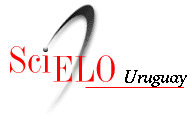
.jpg)




